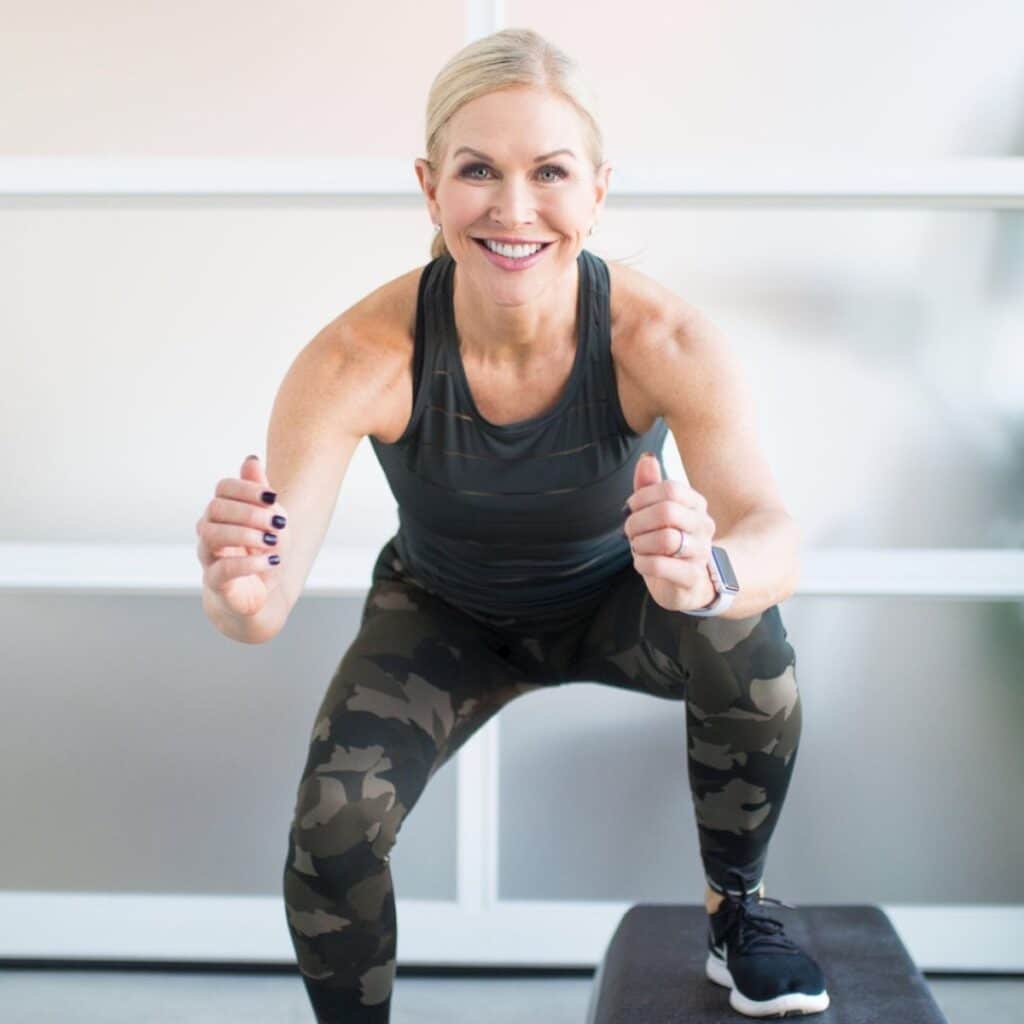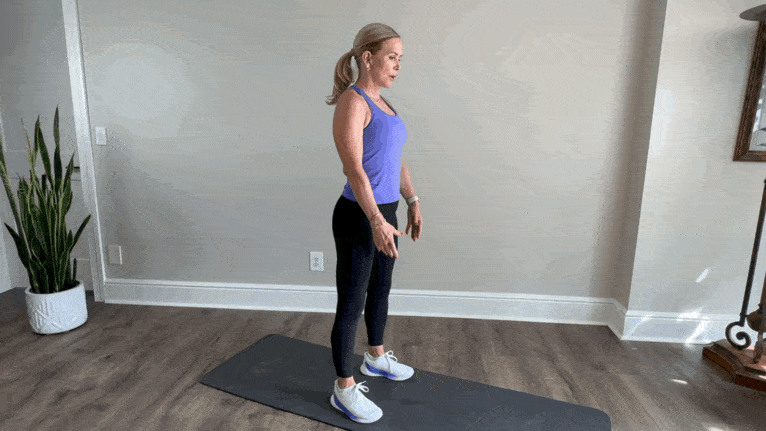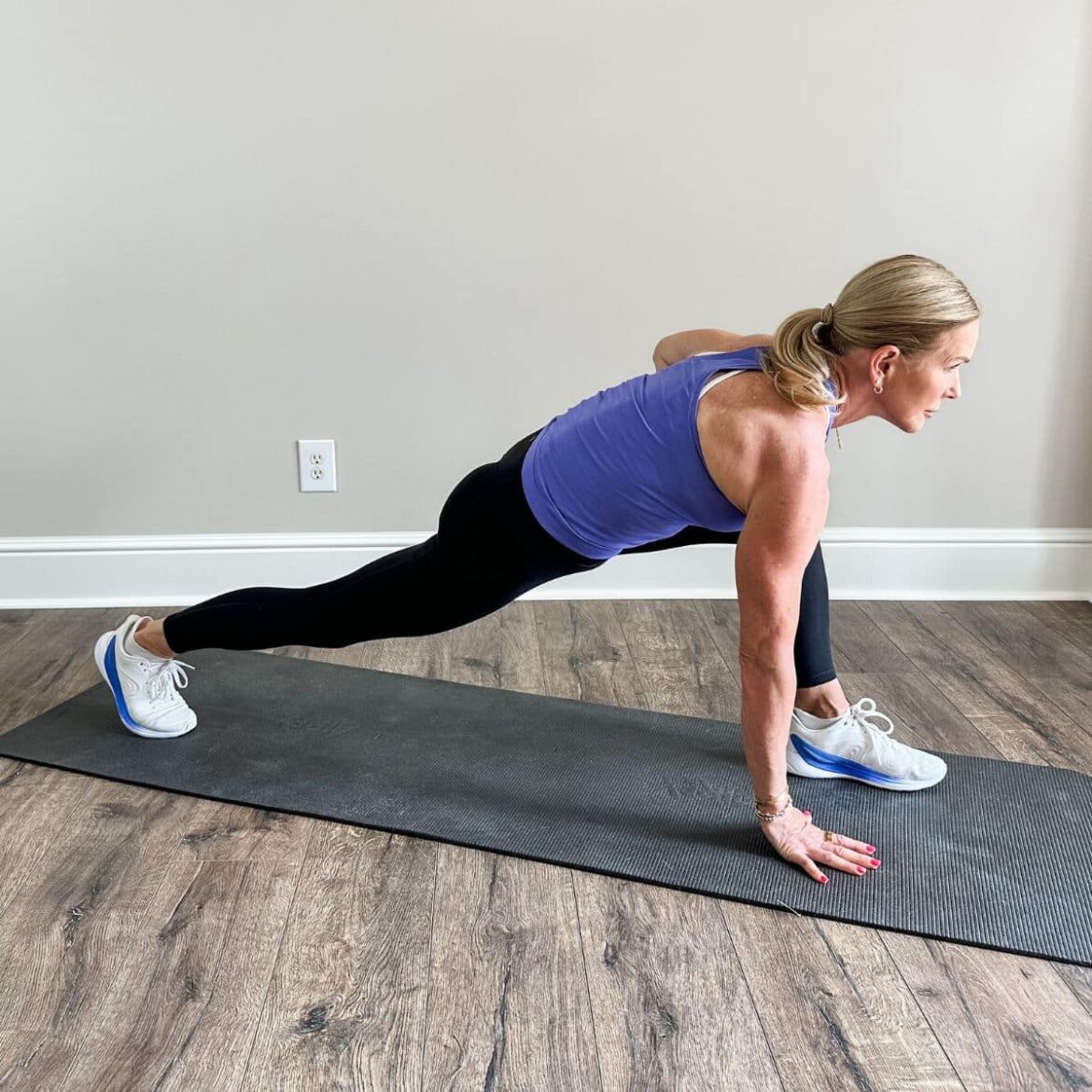Boost your walks and prevent injuries with my 9 essential stretches for walking, perfect for casual strollers and seasoned hikers alike.
I’m a health coach, personal trainer, and lifelong advocate for movement at every age. And one of my all-time favorite ways to move my body? Walking. Whether I’m squeezing in a couple mile power walk before work or getting in a longer 6-mile stroll with the dog, walking clears my head, gets my heart rate up, and just makes me feel good.
But here’s the thing—if you’re putting in the miles, even if it’s “just walking,” you need to be stretching. Seriously. I’ve learned the hard way that skipping stretching exercises can lead to tight hips, cranky hamstrings, and an achy low back, especially as we get older.
So let’s talk about why walking is such a fantastic low-impact workout and why a stretching routine—before and after—needs to be part of your workout.

Why Walking Deserves More Credit
Walking is often underestimated. But make no mistake—it’s one of the best low-impact ways to burn calories, get your heart rate up, and support your overall health. It’s gentle on the joints, accessible for most fitness levels, and can be done anywhere, anytime.
Plus, walking helps with:
If you’re in midlife like me, walking can be the perfect go-to cardio to stay active without over-stressing your body. But… tight muscles and limited mobility can sneak in if you’re not doing your part to warm up and cool down.
Why Stretching Is Non-Negotiable for Walkers
If you’ve ever noticed your hips or legs getting tight during or after a walk, you’re not alone. Walking uses a lot of repetitive motion, and if you’re doing it daily like I am, you’ve got to make time for flexibility and mobility.
Stretching can help:
- Prevent injuries (yes, walkers can get them too!)
- Improve circulation
- Increase range of motion
- Relieve tension in overused muscles and reduces muscle soreness
- Support better posture and alignment
Plus, let’s be honest—as we age, we get tighter. Our muscles and ligaments and joints are aging with us. It’s just the truth. But, it doesn’t mean we can’t work on staying mobile and feeling good in our bodies.
It’s time to start paying attention to your body in a new way and being diligent about our self care which includes stretching.
Let’s dive into my favorite pre-walk and post-walk stretches. I use them myself and recommend them to all my clients—especially those over 50 because our ligaments, tendons and muscles need a little more attention than they did 30 years ago!
These movements are practical, quick, and effective and are easy for you to add to your walking routine. All you need is an extra 5 minutes on the front and back of your walk!
Pre-Walk Stretches (Dynamic & Standing Only)
Before a walk, you want to move the muscles—not hold static stretches. These dynamic stretching moves help to increase blood flow and range of motion in your joints while prepping your body for movement.
1. Standing Hip Circles
This one’s for your hip joints—great for loosening up stiffness.


How to do it: Stand tall, hands on your hips. Slowly lift your right leg in a circular motion (like you are lifting it up and over a step stool). And then bring it back the other direction. Do it 5 times on the right and then repeat on the left leg.
Why it helps: Warms up the hip sockets and lower back area and gently activates your core.
2. Toe Touch Reaches
I’m not talking about the static kind—this one gets your hamstrings moving.


How to do it: Stand with feet shoulder-width apart. Reach both arms up to the sky, then sweep them down toward your toes in a flowing motion. Repeat 10 times.
Why it helps: Warms up the hamstrings, glutes, lower back and upper back while encouraging circulation. Also opens up your shoulders.
3. Standing Side Stretch
A gentle side bend that wakes up your spine and obliques.


How to do it: Reach your arms overhead, then gently lean to one side. Come back to center, and lean the other way. Repeat 5 times each side.
Why it helps: Opens up the sides of the body and helps with torso muscles used during walking.
4. Standing Knee Hugs
We’re targeting the hips and glutes with this one.


How to do it: Stand tall. Bring one knee up toward your chest, hugging it with your arms for a second or two, then release and switch sides. Alternate for 10 total reps.
Why it helps: Activates the hip flexors and glutes while challenging balance a bit (always a good thing!).
5. Calf Raises
Don’t forget those calf muscles—they do a lot of work while you walk!


How to do it: Stand with feet hip-width apart. Slowly rise onto your toes, then lower back down. Do 10-15 reps.
Why it helps: Strengthens your lower legs and promotes circulation before you hit the trail.
Post-Walk Stretches (Gentle, Grounded & Static)
Now that your body is warm, it’s the perfect time to go deeper. These stretches are designed to release tension, lengthen muscles and aid recovery post workout.
1. Toe Touch Hold
Yes, again! But this time it’s a hold.


How to do it: With feet hip width apart, gently fold forward from your hips and reach toward your toes. Let your head and neck relax. Hold for 30 seconds.
Why it helps: A deeper hamstring and lower back release after your walk.
2. Deep Squat (aka Yoga Squat)
This one’s my go-to for opening the hips.


How to do it: Stand with feet slightly wider than hips, toes slightly out. Sink your hips down toward the floor, bringing your hands to prayer position at your chest. Elbows can gently press into your knees.
Why it helps: Stretches your hips, ankles, and lower back—and feels amazing after walking hills or inclines.
3. Cat-Cow Stretch
Perfect for spinal mobility and relieving low back stiffness.


How to do it: Come onto all fours. Inhale and arch your back (cow), lifting your chest. Exhale and round your spine (cat), pulling your belly button up. Repeat for 5-10 rounds.
Why it helps: Releases tension in the entire back and improves spinal mobility.
4. Runner’s Lunge
The ultimate hip flexor stretch—especially important if you sit a lot too.


How to do it: Step one foot forward into a lunge, keeping the back leg extended and hips low. Place hands on either side of the front foot or on your knee. Hold for 30 seconds, then switch sides.
Why it helps: Stretches the hip flexors, quads, and groin—areas that get tight from walking and sitting.
Walking is one of the best forms of exercise, especially for women in midlife. But if you’re logging several miles like I do daily, don’t skip the stretches. A few extra minutes can make a huge difference in how your body feels and functions.
Whether you’re a power walker, a dog walker, or just trying to move more consistently—support your body with mobility and recovery. Your hips, hamstrings, and back will thank you.
